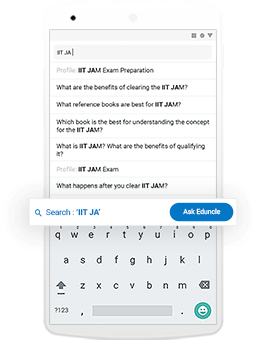Time management is very much important in IIT JAM. The eduncle test series for IIT JAM Mathematical Statistics helped me a lot in this portion. I am very thankful to the test series I bought from eduncle.
Nilanjan Bhowmick AIR 3, CSIR NET (Earth Science)- IIT JAM
- Biotechnology (BT)
Problem the following data are obtained for an enzyme-catalyzed reaction in the presence and absence of inhibitor a. v(mmol ml min) [s](mm) without a with a 0.2
Problem The following data are obtained for an enzyme-catalyzed reaction in the presence and absence of inhibitor A. V(mmol ml min) [S](mM) Without A With A 0.2 5.0 3.0 0.4 7.5 5.0 0.8 10.0 7.5 1.0 10.7 8.3 2.0 12.5 10.7 4.0 13.6 12.5 Using double-reciprocal plots of the data, determine the type of inhibition that has occurred. 2. Does inhibitor A combine with E, with ES or with both? Explain.
- 0 Likes
- 1 Comments
- 0 Shares
-
![comment-profile-img]() >
>
Do You Want Better RANK in Your Exam?
Start Your Preparations with Eduncle’s FREE Study Material
- Updated Syllabus, Paper Pattern & Full Exam Details
- Sample Theory of Most Important Topic
- Model Test Paper with Detailed Solutions
- Last 5 Years Question Papers & Answers
Sign Up to Download FREE Study Material Worth Rs. 500/-










 >
>







Krishan k jakhad![best-answer]()
a. uncompetitive inhibition b. inhibitor binds to ES complex only to make ESI As inhibitor binds, the amount of ES complex is reduced. This reduction in the effective concentration of the ES complex can be explained by the fact that having the inhibitor bound to the ES complex essentially converts it to ESI complex, which is considered a separate complex altogether. This reduction in ES complex decreases the maximum enzyme activity (Vmax), as it takes longer for the substrate or product to leave the active site. In general, uncompetitive inhibition works best when substrate concentration is high. An uncompetitive inhibitor need not resemble the substrate of the reaction it is inhibiting. At no concentration of substrate will the activity of the enzyme be higher when an uncompetitive inhibitor is present, but at low concentrations of substrate the enzyme activity difference will be negligible.